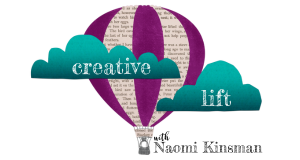by Naomi | Jan 25, 2016 | Tools & Apps
Naomi’s Playlist is an eclectic collection of tools that help me approach my work as play. My hope is that they’ll do the same for you!

Object: Staying connected with and investing focused energy in friends and colleagues.
What Didn’t Work: Trying to remember to reach out. Only reaching out when I needed something specific. Feeling like I was always losing track of people. Wishing the people I care about knew I was thinking of them. Feeling like a failure because when I did think about reaching out, too much time had passed since the last time I’d connected.
My Aha! Moment: While listening to Dorie Clark’s book, Stand Out, on Audible, I made a few connections I hadn’t made before. First, I realized I was so busy getting things done, I wasn’t bothering to share my broader vision. Second, I realized that there are a lot of people who would want to be included in that vision–people who are already in my community–who I was excluding, simply because I hadn’t thought to reach out. Third, I realized that to actually accomplish something meaningful, people are what count.
However, in the rush of everyday life, it’s too easy to be swept into the tasks that show up in your inbox rather than to remember the bigger picture (and much more important) tasks of staying in touch. So, I started exploring options, and that’s when I found Cloze.
How I Play:
• Cloze is a CRM (customer relationship manager) for everyday people. I use the app on my iPhone, but there is also a web interface and an app for Android.
• As a small business owner, I also use a high-powered CRM, but for daily interactions, I use Cloze. Close creates a daily agenda that reminds me to check in with people, populating the list with contacts based on how often I usually interact with them.
• I’ve gone through and started to categorize contacts. Then, I can assign a certain timing to those contacts so I start interacting more regularly with people I haven’t been contacting enough.
• When someone pops up on my daily agenda, I send a quick email saying hello. It’s always nice to have a personal, friendly email in the sea of requests that floods into an inbox–a breath of fresh air.
Player’s Notes:
• Tags allow you to create specialized lists. For instance, I created a list of experts with whom I want to network. I pull up this list and use the Twitter feed and Linkedin functions of Cloze to see what they’re up to and to help support them through retweeting or linking to their posts.
• Even though Cloze automatically sorts people by using your inbox and interactions with them on social media, the possibilities of this powerful tool are a little overwhelming. Rather than trying to set everything up ahead of time, I do a little each week.
Take it to the Next Level:
• Cloze has functions I haven’t explored yet, including project management and other tools. As time allows, I’m looking forward to exploring those, too. Maybe you can share your tips and tricks with me, if you try it out!
• Cloze allows you to export a list to csv, which can allow you to take a more simplified look at your full list of contacts. Try pulling a list and reviewing for additional networking possibilities.
by Naomi | Jan 19, 2016 | Creative Life
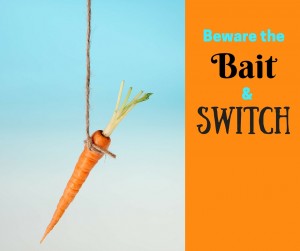
Yesterday, I finished a draft of a book. The project had a tight deadline and required my full concentration. Finishing was a big deal––a cause for true celebration. So, what happened the minute I reached my goal? My mind leapt to all the other things, you know, all those things I hadn’t been doing because I’d been concentrating on the book.
Fortunately, I caught myself in the middle of my “yes, but” thinking, and I remembered to stop, to celebrate what I HAD done, rather than focusing on all that I hadn’t finished. I don’t always catch myself, though.
In fact, I do this kind of bait and switch thing all the time. Here’s how it goes.
- I set a goal for my day.
- Sometimes, the goal is reasonable and I reach it.
- If I do reach my goal, total amnesia sets in about the agreement I made with myself.
- As I close my eyes to go to sleep, I scold myself for the laundry list of other things that are still undone.
Sound familiar?
The trouble is there are ALWAYS more things to do. Emails are always arriving in your inbox. Your laundry is being worn and becoming dirty. Your body is burning up the calories from your last meal and soon it will be time to shop for groceries and cook again. Don’t get me started on the dishes. Your dog is splashing around in mud puddles and tracking dirt into the house and your cat is shedding. Dust-bunnies are gathering. One assignment is done, and the next shows up.
It’s kind of funny––the way we demand the impossible of ourselves––but it’s also not funny at all. Because what’s really going on here is that we’re breaking trust with ourselves. We’re wearing down that strong inner muscle that allows us to achieve goals in the first place. Think about how it would work with a child. We ask the child to make their bed, and then when they proudly present their neatly-made bed, we point out their mid-process art project strewn across the desk. “Why didn’t you clean those up?” Because they were busy making the bed!
How motivated is that child going to be next time we ask them to make their bed?
We break trust with ourselves when we set one goal and score ourselves on another.
Too much broken trust, and I feel lackluster, ho-hum, meh. I can’t drum up the energy to reach for another goal. Of course I can’t. I’ve taught myself there will be no joy in the achieving of that goal. All there will be is more work. To me, that sounds like a recipe for a meaningless trudge through life.
So, today, I’m thinking about my trust-muscle, and how to develop it. How can I celebrate what has been done? How can I learn with my heart (not just my head) that when I’m doing one thing, that means I’m not doing any of the others? And how can I create systems that help me adjust and rebalance quickly after I’ve blocked out the world to reach for a really important goal?
One way I do this is to think about the six main areas of my life: core, commitment, creativity, connection, cultivation and casting dreams. I wrote about them a while back, and will probably write about them more soon. For now, maybe I’ll figure out a way to celebrate by investing time and attention in one or two of the areas that hasn’t been tended for a while. Maybe I can spend some time with a friend (connection) and make something just for the fun of it (creativity). Yep, that sounds like an excellent way to celebrate.
How about you? Have you baited and switched on yourself recently? What might you do to re-build some inner trust?
by Naomi | Oct 5, 2015 | Tools & Apps
Naomi’s Playlist is an eclectic collection of tools that help me approach my work as play. My hope is that they’ll do the same for you!
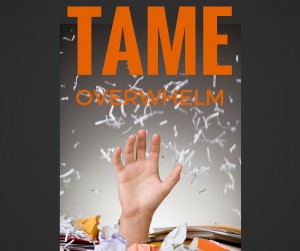 Object: Taming the mental, digital and physical clutter of information overload so I have what I need, when I need it, clearing space for imagining and creating.
Object: Taming the mental, digital and physical clutter of information overload so I have what I need, when I need it, clearing space for imagining and creating.
What Didn’t Work: File folders, piles of paper on my desk, random post-it notes, mental notes, asking friends to “remind me,” loading up my desktop, archiving important project notes in email, allowing “to consider” items to clog up my to-do list, bookmarking web research, and more.
My Aha! Moment: I discovered Michael Hyatt’s post about using tags rather than using notebooks to organize Evernote, and suddenly, I understood why Evernote hadn’t yet worked for me. My system was overly complicated. Also, I wasn’t thinking strategically enough.
How I Play:
- Like Michael Hyatt, I use tags as my major organization system. My default notebook is called “inbox,” which I use as a collection bin for incoming files.
- Once I tag files, I move them into the larger notebook called “cabinet.”
- I also have a couple notebooks where I keep items to share with others, such as “NK content,” where I keep all my blogging materials to share with my team.
- Symbols are my secret weapon! For instance, I use a * in front of all tags that have to do with projects. That way, when I’m tagging a file, I can type a *WP: and pull up all the project tags for Writerly Play. I use a ~ for all tags that are active such as ~to consider and ~to study.
- Shortcuts are also powerful. By adding my ~ tags as shortcuts, I can easily access these categories which need my attention on an ongoing basis.
- Organize your tags in the Tag view. You can stack tags which are related to one another so you can better see your system. Create a stack for “shared” to keep any tags created by others who share notebooks with you from tangling up your own system.
Player’s Notes:
- Keep your system loose and organic. It’s easy to create new tags and move notes as a batch from one tag to another. Rather than trying to set up your entire system perfectly, just begin, and refine as you go.
- Use your tags as bins. If you were lucky enough to have a parent or teacher who gave you color-coded buckets or drawers to hold your toys or craft supplies, you already understand how to make Evernote work for you. When one bin starts to overflow, or becomes too much of a mishmash, set up a new bin.
- Think strategically. First, identify the problem. “I’m getting all of this inbound content from pros about how to set up my blog or how to master social media, and I can’t review it as fast as it comes in. I file it and then I lose it.” Then, come up with a tag-based solution. “I can add a ~to study tag to keep all of those incoming files, and make that tag a shortcut. Then, when I’m in the study mood, I can scan all of the options and choose the content that’s most important to consume first.
Take it to the Next Level:
- Try out note links. Every note has it’s own URL, which means you can link your notes to one another. I use a master note for what I call {ccentral}, which shows my my entire project list at a glance, including all of my areas of responsibility, and some key notes to reference. In combination with my to-do app, Nozbe, this has become a powerful way for me to keep tabs weekly on how projects are progressing.
- Use links to give you easy access to outside files. Navigating to google sheets files, for instance, can be a multi-step chore. By linking to those files in a note, you can streamline the process, and keep that file with other project related files.
- Use reminders. Instead of trying to remember to consider signing up for that conference, to check out that gift idea, or buy those theatre tickets later, use Evernote as a tickler file, sending you a reminder to consider the idea just when the time is right.
by Naomi | Jul 3, 2015 | Tools & Apps
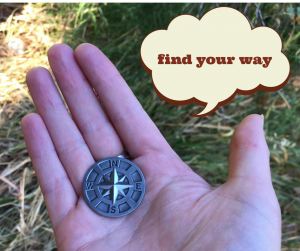 Object:
Object: Setting realistic expectations for my drive time, and avoiding traffic whenever possible. Also, making my drive-time productive thinking or learning time rather than stressed-out finding-my-way time.
What Didn’t Work: Relying on my favorite back-road route only to find that today that route was clogged with construction traffic. Planning to be to a client in half an hour, only to find that today, an accident had caused a twenty minute delay. Spending my whole drive stressed out and blindly trying other routes instead of being able to relax and spend the time thinking about projects or learning from podcasts or escaping into a story audiobook-style.
My Aha! Moment: I have a strong internal compass, so it took me a long time to give in and let Waze take the lead. But, after enough frustration, and a few unexpected late arrivals for clients, I decided to rely on Waze and its ability to calculate drive-time in real-time. Now, I can text my clients and let them know if the drive may take longer than planned.
- I use a suction cup mount for my phone in my car, so I can see Waze safely as I drive.
- I’ve made it a habit to start up Waze whenever I’m on my way somewhere and time is an issue. I don’t navigate on errands or other more meandering trips, but my husband hopes that my habit will evolve. He uses Waze for nearly every trip we take out of the neighborhood.
- I email or text myself the address of new places I’m headed, so I can easily paste the location into the Waze search. That said, the search function on the app is powerful, and public places are usually simple to locate inside the app itself.
- As long as traffic seems normal, I turn off the app about ten minutes from home. I don’t need all the last turn-by-turn instructions, and that way I can listen to my audiobook or podcast in peace.
Take it to the Next Level:
- I’m trying out TripLog, too, to track business mileage. Since I start up Waze for each drive, it’s just one more step to also start TripLog. Maybe TripLog will make the playlist sometime soon.
by Naomi | Jun 19, 2015 | Tools & Apps
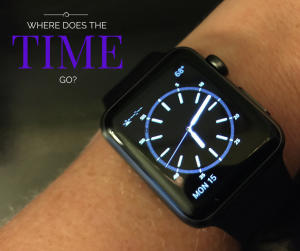 Object:
Object: Understanding how my time is spent, to gain a big picture view (and if needed, adjust) my work-habits.
What Didn’t Work: Trying to put things on the calendar and stick to strict pre-determined time slots. Hopping from one project to another in response to whatever pinged at the moment. Simply hoping I was getting to all of my projects. Only vaguely being able to answer the question: so how long did it take to… (fill in the blank)?
My Aha! Moment: I was listening to Amy Porterfield’s podcast (
Episode 47). In this interesting interview about mindset she interviewed Todd Herman. Todd suggested keeping a chart of $10 work, $100 work, and $1000 work for a week. The challenge was to notice each task you did and record it into one of those columns. I loved the idea of the activity, but wasn’t yet in the place where I could afford to outsource anything. Outsourcing is the ultimate goal of the activity— acknowledging that when you’re the content-maker, creating your content is your greatest contribution, and that perhaps you oughtn’t to be coding HTML so your website works.
I remember thinking, “But I don’t even know which projects I’m spending my time on, let alone the amount of money I’d someday be able to pay someone to do the tasks!” For me, the first problem to tackle was “which project does this task fit into?” I needed to better understand where my hours were going before I could determine where any time-leaks might be. Maybe I was spending 20 hours a week on a project, but on all of the wrong parts of the project. Or maybe I was ignoring certain projects for too long, only returning to them after they had turned into raging problem-fires. I needed a way to track my time.
Enter the
Timely app, a very nice-to-look-at visual time-tracking tool.
- I’ve connected the Timely app with my main calendar, so the app knows what I’m supposed to spend my time on.
- I can create a new task with just a couple easy clicks on my phone or desktop, and start a timer or enter time spent manually.
- I use big categories, such as “admin” or “planning,” and sometimes add a few notes. The main thing for me is to see what I’m doing in broad strokes.
Player’s Notes:
- If my day gets busy and I forget to record some time spent, I record estimates at the end of the day, when I still remember.
- Timely has saved me so much time going back and trying to remember, particularly with invoices. Often, scheduling and hourly billing shifts due to various factors, so having a day-by-day record what actually happened is very helpful.
Take it to the Next Level:
- Review how your time was spent every couple weeks with the Timely reports. Are there trends that point to problems? If so, how can you turn that problem into a question, for which you can then seek a solution?

